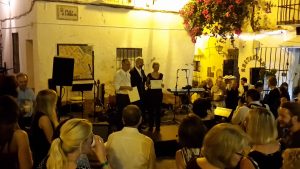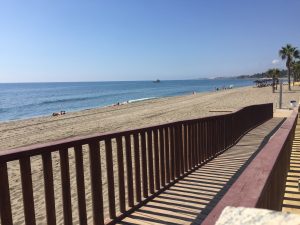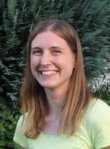The Christmas markets have already opened and the year is now quickly coming to an end. When looking back at this year, one of the great [german: toll] Conferences (at least for all immunologists working in Innate Immunity) was the Toll Meeting.
The meeting´s name is actually derived from the pattern recognition receptor in drosophila named Toll. The Toll protein was initially identified by Christiane Nusslein-Vollhardt in 1985 before it was shown to control the antifungal response in fruit flies, some ten years later. It is therefore fitting that the Toll conference, since first taking place in 2006, has developed into one of the most important international Innate Immunity meetings. This year’s Toll Meeting took place in Marbella, Spain from the 30th September to the 3rd October.

Socializing at the evening events (by Quique Onate)
Douglas Golenbock opened the Meeting, reminding the audience that the Toll Meetings were known for intense networking and lively discussions, and this was certainly the case again this year. The conference organizers particularly encouraged interdisciplinarity, meeting researchers with different backgrounds and the translational application of scientific findings.
During the three days we had a dense program full of fantastic talks, covering the spectrum from fly immunity and Toll-like receptors (TLRs) to inflammasome and interferon signaling, immunity to pathogens, and myeloid cell development. The poster sessions and coffee breaks encouraged interaction and discussion with other researchers and fostered our shared fascination of research in Innate Immunity.

Anna-Maria Herzner receiving the Paula Pitha Award (by K. Höning)
Many excellent and well-known researchers from all over the world presented their research at the conference, including the Nobel Prize winner Jules Hoffmann, James Chen, Vishva Dixit, Richard Flavell, Russell Vance and Luke O’Neill. Among these esteemed scientists, several researchers from Bonn also presented their cutting edge data at the meeting. Dr Anna-Maria Herzner, a postdoc at the Institute for Clinical Chemistry and Clinical Pharmacology, presented her work on immune stimulatory DNA species and in the end won the Paula Pitha Award. Jonathan Schmid-Burgk, a PhD student at the Institute for Molecular Medicine, presented his data on a genome-wide CRISPR screen, in which he very recently identified a novel player in the NLRP3 inflammasome signaling pathway. Also regarding the NLRP3 inflammasome Prof Michael Heneka spoke about the role of NLRP3 in microglia and thus in Alzheimer’s disease. While another group presented data on the induction of an antiviral interferon response by lipid rich diet, which saved mice from plasmodium infection, Prof Eicke Latz presented data on how problems resulting from our high fat western diets can be treated. Prof Latz showed that cholesterol crystals in blood vessels, which are deposited in response to a high fat diet, activate the inflammasome which contributes to atherosclerosis pathogenesis. These crystals can be dissolved by distinct carbohydrates called cyclodextrins, and cyclodextrin treatment could provide therapy for atherosclerosis. Finally, findings on an alternative inflammasome activation pathway were presented by Prof Veit Hornung.

Marbella’s beach is another extra for attending the Toll meeting (photo by K. Höning)
As in the whole field of innate immunity research, the focus of the conference has broadened from merely pattern recognition receptors like TLRs to other topics like inflammasome research, where the activation mechanisms of NLRP3 still remain a mystery to the community.
Altogether, we enjoyed three inspiring days in Spain full of scientific discussions, a fantastic social evening event in Marbella’s old city with live music from a speaker´s band, and the beautiful weather and scenery of the southern Spanish coast.

Author: Klara Höning
